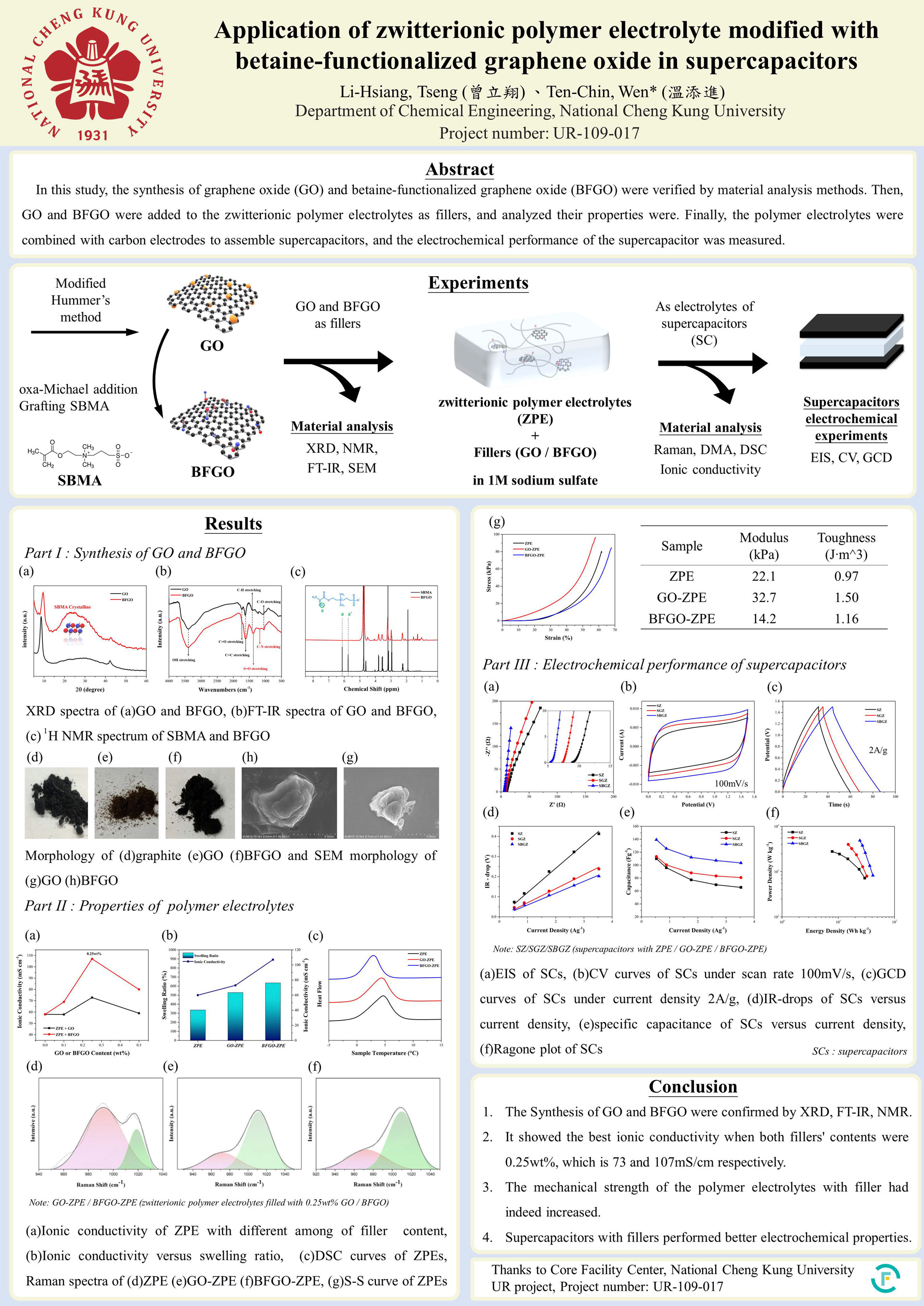Entry number:16
SUBJECT
Application of zwitterionic polymer electrolyte modified with betaine-functionalized graphene oxide in supercapacitors
DEPARTMENT
Department of Hydraulic and Ocean Engineering
PROFESSOR AND STUDENT
Professor:Ten-Chin Wen
Student:Li-Hsiang, Tseng1
ABSTRACT
In this study, [2-(methacryloyloxy)ethyl]dimethyl-(3-sulfopropyl)ammonium hydroxide (SBMA) was grafted with graphene oxide and added to the zwitterionic polymers electrolytes in the supercapacitors to improve the electrochemical performance of the supercapacitors.
In supercapacitors, gel-electrolytes could provide good ionic conductivity and good mechanical strength, but both had room for improvement. Among them, the zwitterionic polymer had excellent ionic conductivity due to its immobilized pair ions which could enhance the ability of ion movement, but it was still slightly different from the liquid electrolyte. Also, because of its unique structure and properties, its mechanical strength was poor. In many studies, graphene oxide (GO) had been proven as a filler to increase the mechanical strength of polymers. Zwitterionic SBMA was attempting to graft on the oxidation site of graphene oxide to make it a betaine-functionalized graphene oxide (BFGO), which was expected to increase the mechanical strength and the ionic conductivity as a filler of the polymer electrolyte.
In this study, the synthesis of GO and BFGO were verified by X-Ray diffraction analysis, nuclear magnetic resonance spectroscopy, etc. Then, GO and BFGO were fillers added to the polymer electrolytes which soaked in 1M sodium sulfate, and measured the ionic conductivity. It was found that when the filler content was 0.25wt%, it showed the best ionic conductivity, which is 73 and 107mScm-1, respectively. The dynamic mechanical analyzer verified that the mechanical strength of the polymerelectrolytes with filler had indeed increased. Finally, the polymer electrolytes were combined with carbon electrodes to assemble supercapacitors, and the electrochemical performance of the supercapacitor was measured by electrochemical impedance analysis, cyclic voltammetry, and constant current charge-discharge method. Among them, the polymer electrolyte added with BFGO performed well, with the lowest impedance, IR drop, the largest specific capacitance value. Furthermore, it possessed excellent energy density (46.2 WhKg-1), and power density (8.2 kWKg-1).


 Sweepstake
Sweepstake